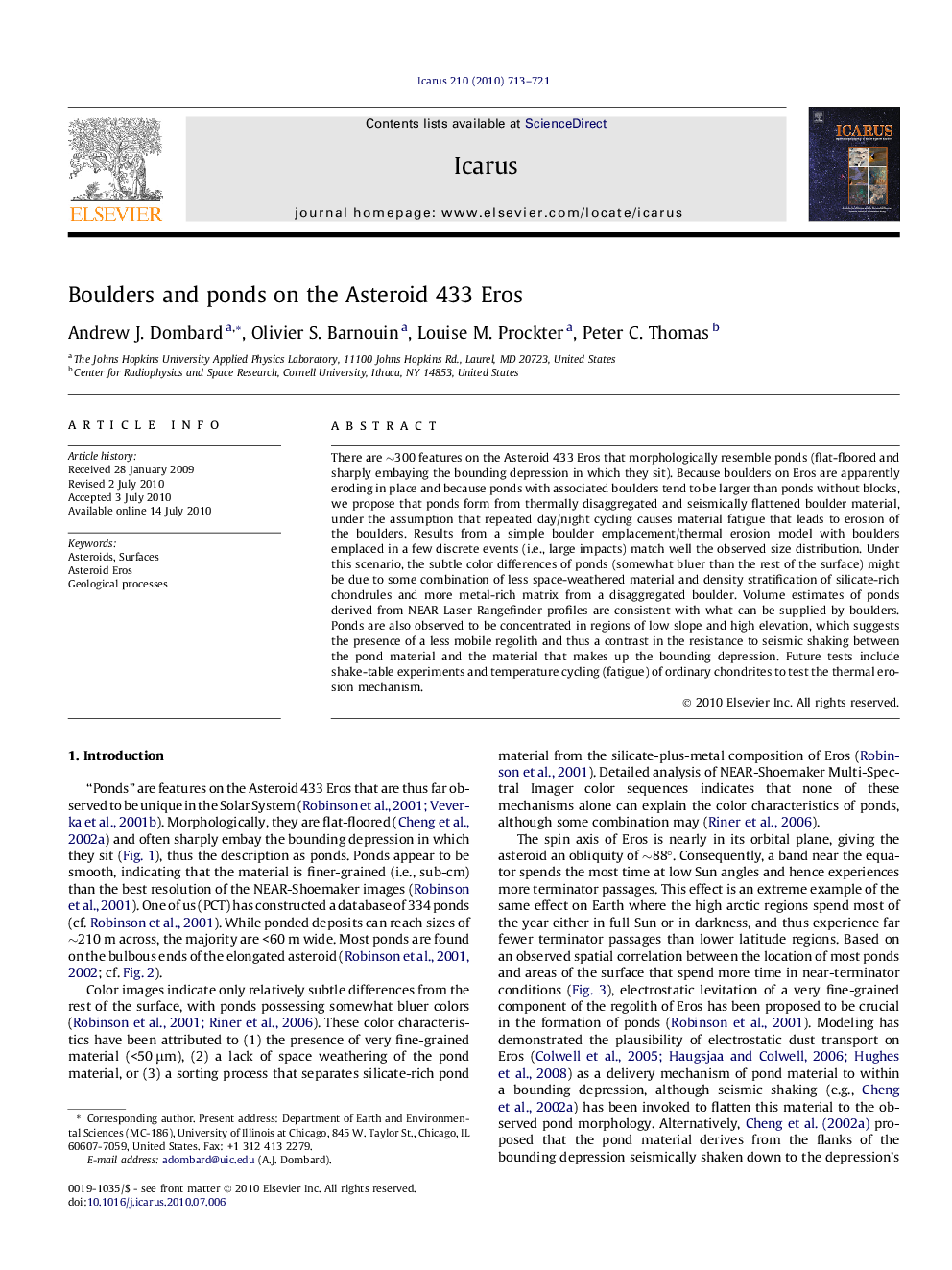| Article ID | Journal | Published Year | Pages | File Type |
|---|---|---|---|---|
| 1773621 | Icarus | 2010 | 9 Pages |
There are ∼300 features on the Asteroid 433 Eros that morphologically resemble ponds (flat-floored and sharply embaying the bounding depression in which they sit). Because boulders on Eros are apparently eroding in place and because ponds with associated boulders tend to be larger than ponds without blocks, we propose that ponds form from thermally disaggregated and seismically flattened boulder material, under the assumption that repeated day/night cycling causes material fatigue that leads to erosion of the boulders. Results from a simple boulder emplacement/thermal erosion model with boulders emplaced in a few discrete events (i.e., large impacts) match well the observed size distribution. Under this scenario, the subtle color differences of ponds (somewhat bluer than the rest of the surface) might be due to some combination of less space-weathered material and density stratification of silicate-rich chondrules and more metal-rich matrix from a disaggregated boulder. Volume estimates of ponds derived from NEAR Laser Rangefinder profiles are consistent with what can be supplied by boulders. Ponds are also observed to be concentrated in regions of low slope and high elevation, which suggests the presence of a less mobile regolith and thus a contrast in the resistance to seismic shaking between the pond material and the material that makes up the bounding depression. Future tests include shake-table experiments and temperature cycling (fatigue) of ordinary chondrites to test the thermal erosion mechanism.
